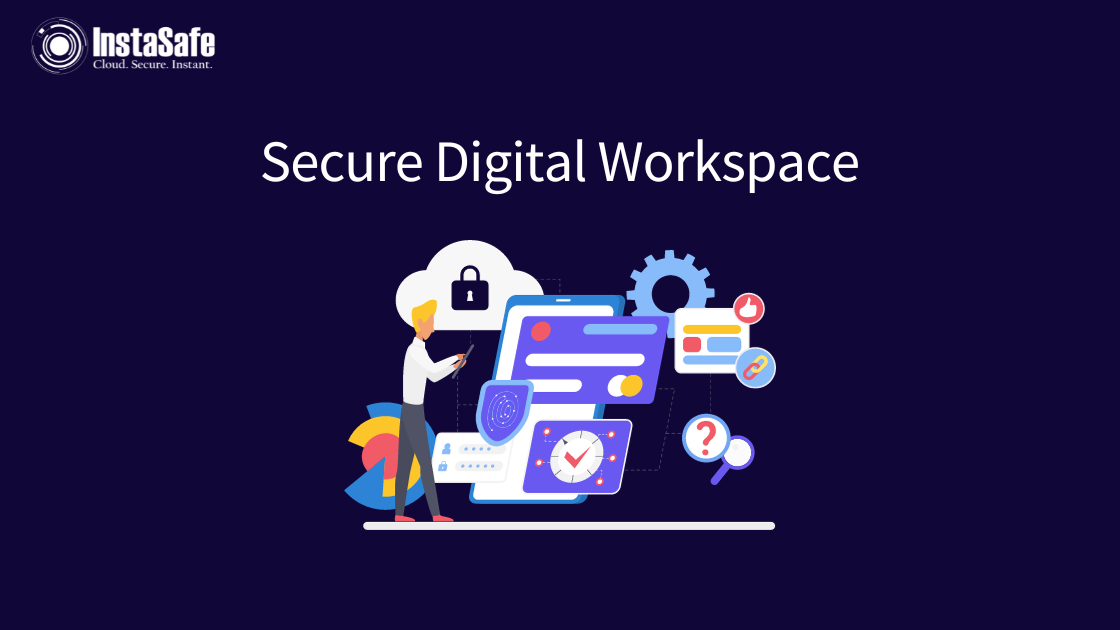Secure Digital Workspace

Integrated within Virtual Desktop Infrastructure (VDI) solutions, the Secure Digital Workspace transcends traditional boundaries, delivering not just desktops and applications, but a fortified ecosystem that prioritizes security, accessibility, and user experience. This article explores the essence of the Secure Digital Workspace, delving into its capabilities and the transformative impact it brings to modern workplaces.
What is a Secure Digital Workspace?
The Secure Digital Workspace is a comprehensive solution that transcends traditional VDI offerings, encompassing virtualized desktops, applications, data, and collaboration tools within a secure and unified environment. It prioritizes security measures to protect sensitive information, enhances user experience, and fosters productivity by providing a seamless and adaptive workspace accessible from any device.
Key Features and Capabilities:
1. Unified Endpoint Management:
- Manages and secures diverse endpoints, including desktops, laptops, tablets, and smartphones, from a centralized console.
- Ensures consistent security policies and configurations across all devices.
2. Multi-Factor Authentication (MFA):
- Implements robust MFA protocols to fortify user authentication.
- Adds an extra layer of security, mitigating the risk of unauthorized access.
3. Data Encryption and Privacy Controls:
- Encrypts data both in transit and at rest to safeguard sensitive information.
- Enforces privacy controls to comply with data protection regulations.
4. Secure Access Management:
- Enforces access controls based on user roles, device posture, and contextual factors.
- Ensures that users have the right level of access based on their responsibilities.
5. Collaborative Tools Integration:
- Integrates collaboration tools such as messaging, video conferencing, and file-sharing within the digital workspace.
- Enhances communication and collaboration among remote and distributed teams.
6. Application Virtualization and Delivery:
- Virtualizes and delivers applications securely to users' devices.
- Minimizes the risk of application vulnerabilities and facilitates efficient application management.
7. User Experience Personalization:
- Allows users to personalize their digital workspace settings and preferences.
- Enhances user satisfaction and engagement.
8. Endpoint Threat Detection and Response:
- Utilizes advanced threat detection mechanisms to identify and respond to security incidents on endpoints.
- Strengthens the overall security posture against evolving cybersecurity threats.
Advantages of a Secure Digital Workspace:
1. Enhanced Security Posture:
- Integrates advanced security measures to protect against cyber threats and unauthorized access.
- Minimizes security vulnerabilities associated with distributed work environments.
2. Accessibility and Flexibility:
- Provides users with the flexibility to access their digital workspace from any location and device.
- Empowers remote and mobile workforces, promoting adaptability and productivity.
3. Simplified IT Administration:
- Centralizes the management of endpoints, security policies, and user access.
- Streamlines IT administration, reducing complexity and optimizing resource utilization.
4. Scalability and Future-Proofing:
- Scales seamlessly to accommodate growing user bases and evolving business requirements.
- Ensures the digital workspace remains adaptable to future technological advancements.
5. Compliance Adherence:
- Facilitates compliance with industry regulations and data protection standards.
- Provides audit trails and controls necessary for regulatory adherence.
Implementing a Secure Digital Workspace - Best Practices:
1. Comprehensive Security Assessment:
- Conducts a thorough assessment of security requirements and potential vulnerabilities.
- Identifies and addresses security gaps in the digital workspace environment.
2. User Training and Awareness:
- Provides training to users on secure practices and the features of the secure digital workspace.
- Enhances user awareness to promote responsible and secure usage.
3. Regular Security Audits:
- Conducts regular security audits to assess the effectiveness of security measures.
- Identifies and addresses emerging security threats promptly.
Conclusion:
The Secure Digital Workspace stands as a testament to the evolution of VDI solutions, offering a fortified, flexible, and user-centric environment for modern workforces. By prioritizing security, accessibility, and collaboration, organizations can empower their teams to thrive in the digital age. Embracing the Secure Digital Workspace is not just a technological upgrade; it's a strategic investment in creating a resilient and adaptive workplace for the future.
